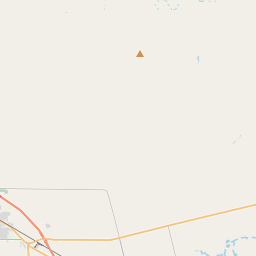Hobbs Independent School District
Historical marker location:






The first school in what would become the Hobbs community was known as Buffalo and taught in a tent on Buffalo Creek from 1887 to 1888. The Rev. Robert Martin erected a church and schoolhouse on the site with funds from his home church in Louisiana. By 1896 the school was named for Vachel Hobbs Anderson, postmaster at Roby, and had changed locations several times. J. W. Hale became county school superintendent in 1922. His efforts contributed to the voters' decision to consolidate the Hobbs, Dallas, Grady and Baird common school districts in 1924. The new district, known as Hobbs Consolidated Common School District No. 18, united the four districts. The new eleven-grade Hobbs school facility opened in 1925. With additions and annexations in ensuing years, Hobbs grew from 85 square miles to 240, combining many schools: Guinn, Sardis, Lone Star, Buffalo, Claytonville, Camp Springs, County Line, Capitola, Sam Bone, Busby, Barronview, Plainview, Cottonwood, Bush, Lone Valley, Midway, Gannoway, Rico, Busby, Rough Creek, Chicken Foot, Linn, Pyron and others.
In the 1930s the Works Progress Administration added the primary, home economics and vocational agricultural buildings to the campus, and grade twelve was added to the course of studies. After World War II the rural population decreased as people migrated to cities. High school enrollment was 380 in the 1940s. A new building was constructed in 1956, a cafeteria in 1969 and a new vocational agricultural building in 1976. The high school was closed in 1980 and, when elementary school enrollment dropped to 13 in the fall of 1989, Hobbs Independent School District was dissolved and annexed to the Roby, Rotan and Snyder districts. (2000)
As one of the most visible programs of the Texas Historical Commission (THC), historical markers commemorate diverse topics in Texas history, including: the history and architecture of houses, commercial and public buildings, religious congregations, and military sites; events that changed the course of local and state history; and individuals who have made lasting contributions to the state, community organizations, and businesses.
The city of Austin, the state capital, is known as the live music capital of the world. It is home to many music festivals, including South by Southwest (SXSW) and the Austin City Limits Music Festival.
The early settlers of Fisher County were primarily ranchers and farmers who were attracted to the fertile land and abundance of water sources, particularly the Colorado River. These pioneers faced many challenges, including severe weather conditions and conflicts with Native American tribes in the area. However, they persevered and gradually developed thriving communities, mainly centered around farming and ranching.
The arrival of the railroad in the late 1800s greatly enhanced the county's economic development. The railroad allowed for the transport of goods and improved access to markets, leading to the growth of towns such as Roby and Rotan. With the expansion of the rail network, Fisher County became an important transportation hub in the region.
In the 20th century, Fisher County faced some setbacks, including the effects of the Great Depression and a decline in population due to the mechanization of farming. However, the discovery of oil and gas reserves in the area in the 1940s provided a boost to the local economy. Today, Fisher County continues to rely on agriculture, oil and gas, and small businesses as its main economic drivers, while also preserving its historical heritage through museums and cultural events.
Fisher County Timeline
This timeline provides a glimpse into the major events and milestones that have shaped the history of Fisher County, Texas.
- 1870: Fisher County was established on February 1, 1876, and named after Samuel Rhoads Fisher, a signer of the Texas Declaration of Independence.
- 1880s: The first settlement in the area was established near the Clear Fork of the Brazos River.
- 1890s: The county experienced a population boom with the arrival of the Texas Central Railroad.
- 1911: The town of Roby was designated as the county seat of Fisher County.
- 1930s: Fisher County, like the rest of the country, was greatly affected by the Great Depression.
- 1940s: The discovery of oil and gas in the county led to economic growth and increased population.
- 1970s: The county faced economic challenges due to declining oil prices.
- 2000s: Fisher County continued to be primarily agricultural, with farming and ranching as the main economic activities.